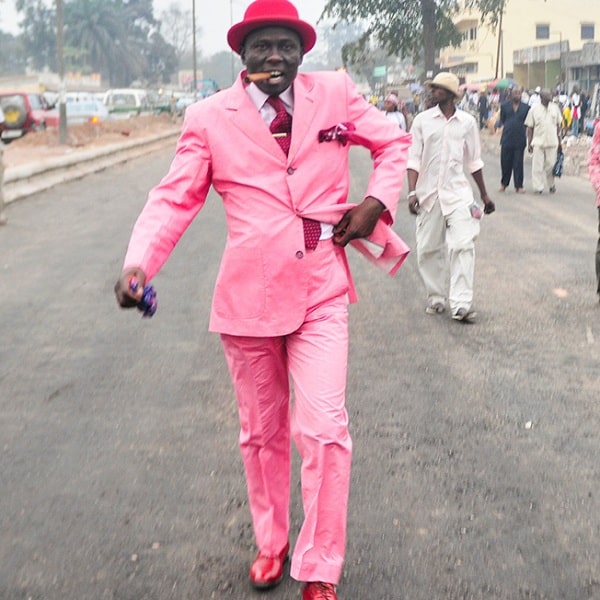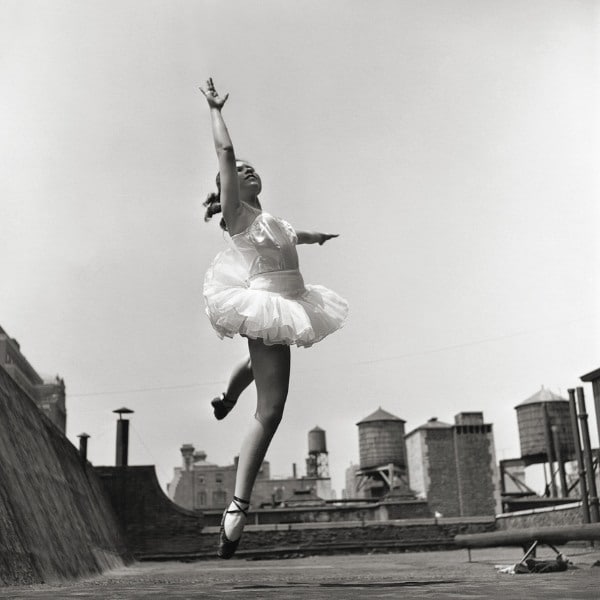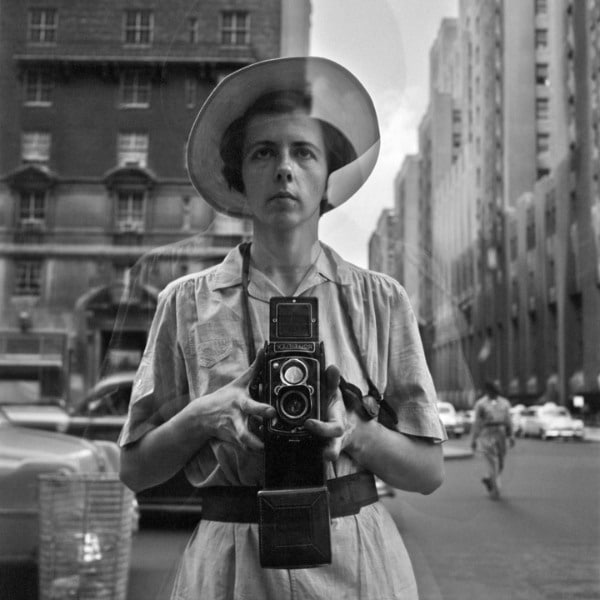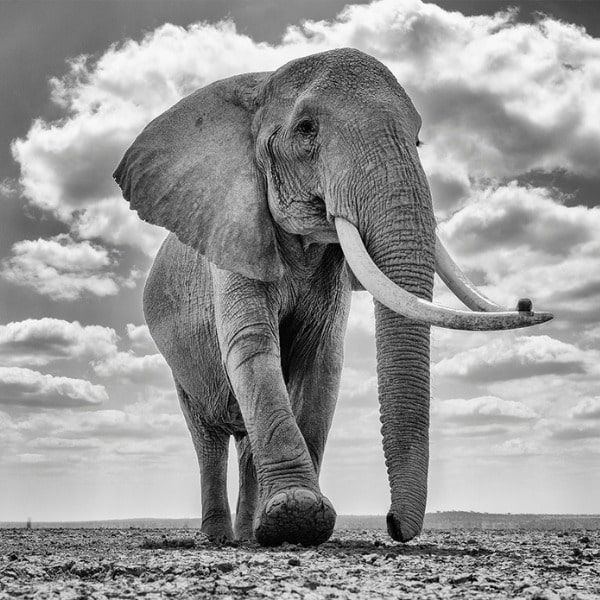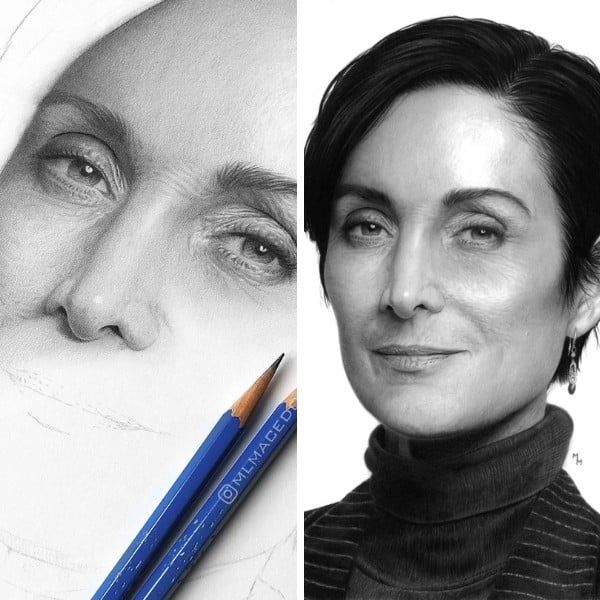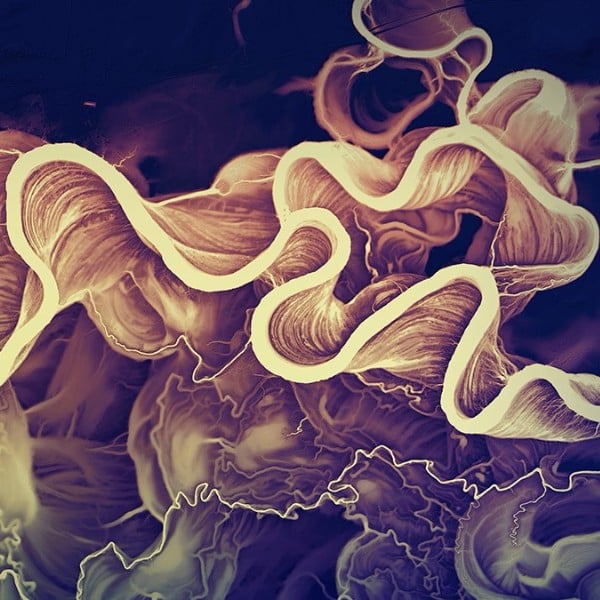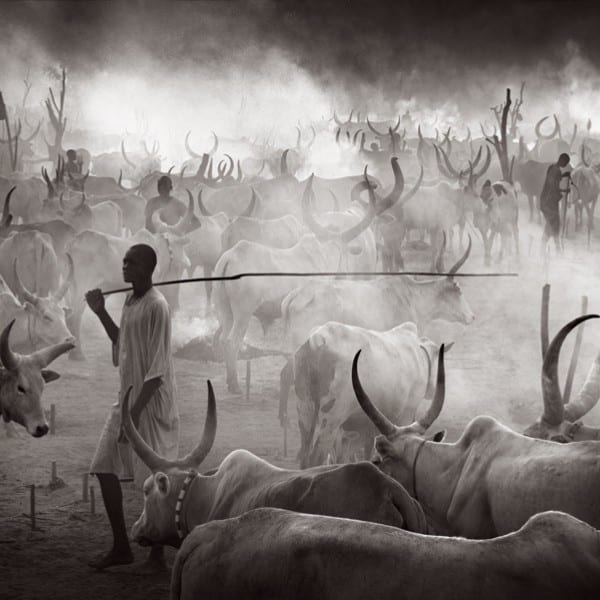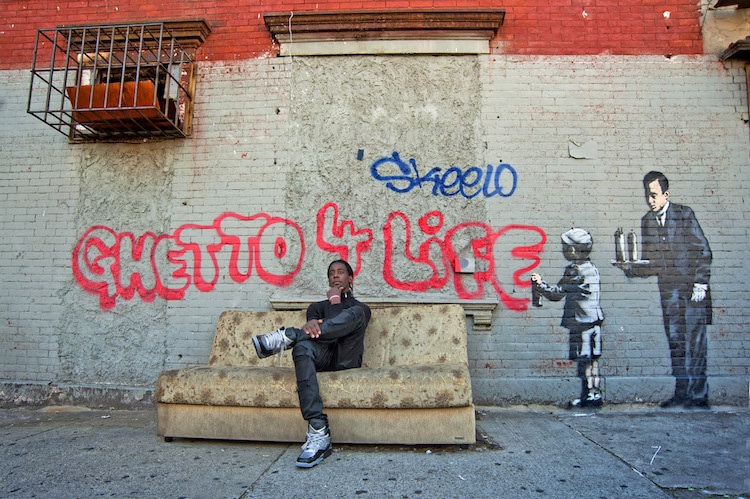
Banksy, the Bronx, 2013. (Photo: Martha Cooper)
This post may contain affiliate links. If you make a purchase, My Modern Met may earn an affiliate commission. Please read our disclosure for more info.
Photographer Martha Cooper is primarily known for her incredible catalog of imagery that captured the birth of New York's hip-hop and graffiti scenes, but the reality is that she has documented a wide variety of underground traditions and embarked on numerous street photography projects. Now, Atlanta's The Gallery by Wish brings into focus the full breadth of her work with a new exhibition, Then & Now.
Highlighting her landmark graffiti photography from the '70s and '80s, but also giving space for new and old work in other genres, the exhibition gives the public a chance to see different sides of the legendary photographer. Tracing her career from early work in Tokyo, where she documented Japanese tattoo culture, to her recent project comparing two impoverished neighborhoods in South Africa and America, it's an incredible look at 40 years of Cooper's photography and a reminder of her versatility.
Though she'll turn 75 this year, Cooper shows no signs of slowing down, her calendar booked with travel around the world, as she continues to photograph art and cultural events with her Nikon. And, at times, she's even sneaking into the yard still—a forthcoming book with photographer Nika Kramer sees the photographer following elusive Berlin graffiti crew 1Up over the course of a week as they carry out their work.
Cooper was brought in for the inaugural show at the gallery by curator Monica Campana, well-known in the street art world for the highly successful Living Walls festival, which helped shape Atlanta's public art scene. We had a chance to speak with Campana and Cooper about the acclaimed photographer's work and the importance of the show for the Atlanta arts community.
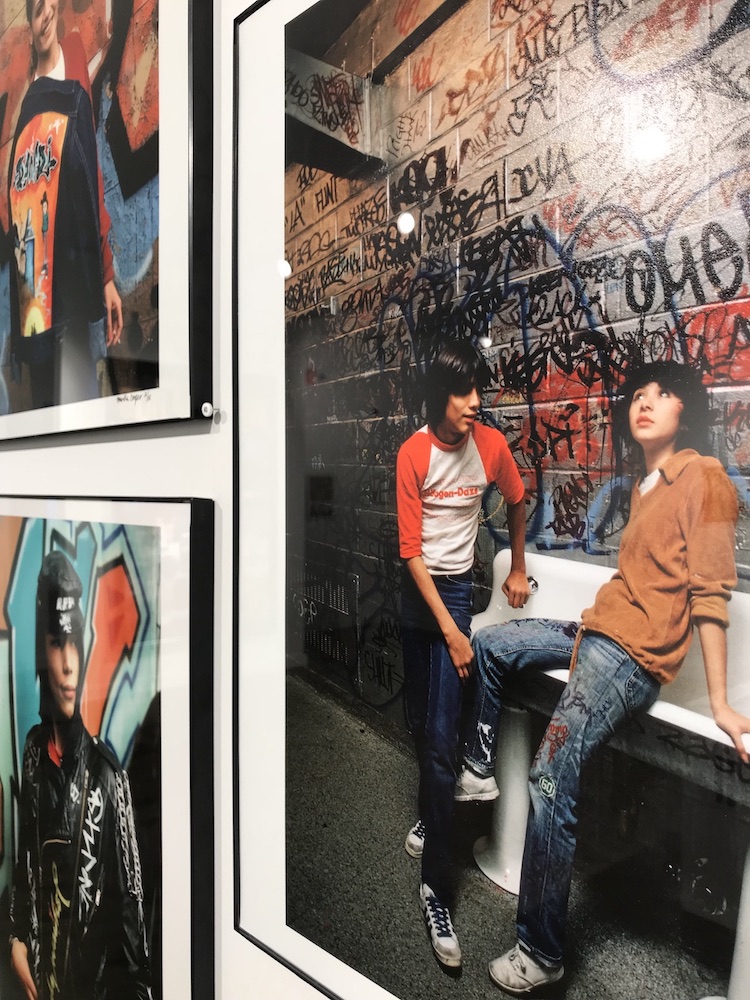
What made Martha Cooper the perfect choice for the inaugural show at the gallery?
Monica Campana: I have known Martha for a bit now and for a while I had dreamed to be able to work with her in this capacity so this was perfect timing for me. Martha's work is one of the best photographic documentations of graffiti and hip-hop culture from the late '70s and '80s. Her photographs bring a sense of nostalgia, but also is a look into the history that shaped hip-hop culture today. I knew she would be a great fit for the audience at Wish, but also for Atlanta as a whole. Atlanta, being such an influential place for hip-hop culture, had never seen Martha's photographs in an exhibition of this capacity until now.
Showcasing her work was a no-brainer, I knew people would react positively to this, but what was more interesting was to grab a new audience through her work, or to teach a young person about Martha and/or some of the people in her photographs. It was also great to start our programming with a woman, one of the most bad ass girls I know, and to have a mostly male-dominated industry pay so much respect to her.
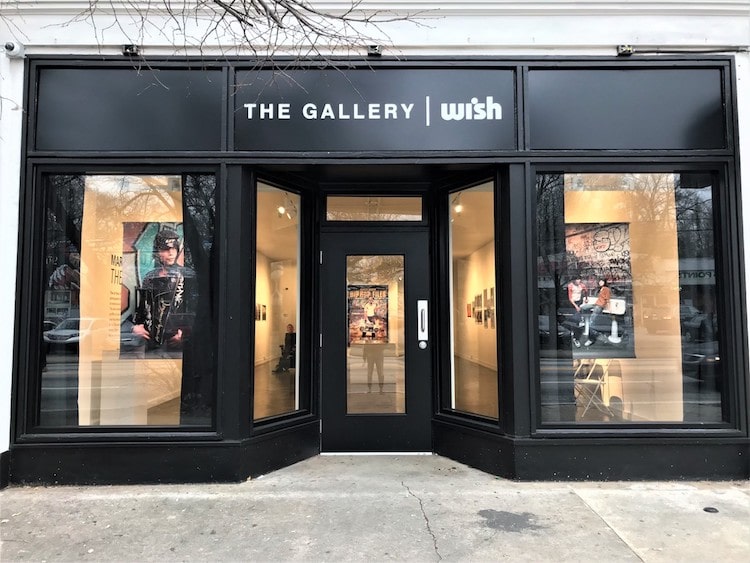
What do you hope Wish will be able to bring to the Atlanta arts scene?
I hope for the Gallery by Wish to fill in that gap that we are missing in Atlanta's art scene. We are the in-between from the high brow gallery and the DIY space. We want to offer support to our artists to create not only beautiful exhibits but also spaces for much-needed dialogue in our creative community.
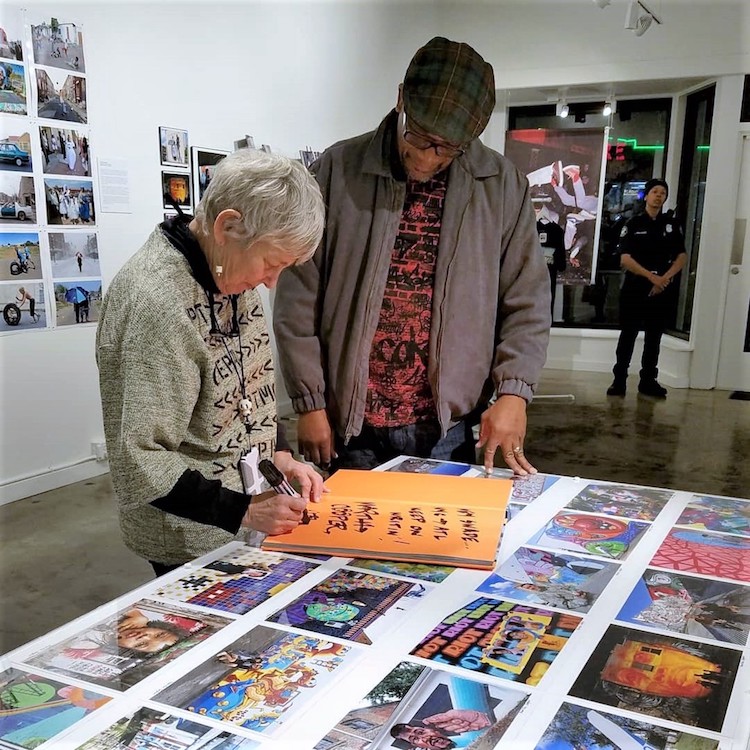
Martha Cooper signing a copy of her 1984 book, ‘Subway Art.' (Photo: Michelle Khouri)
The exhibition gives a nice overview of your work from shooting in the yards in the '80s to photographing some of street art's current superstars. What’s it like to see a collection of so many years' work in one space?
Martha Cooper: Because most people are only familiar with my '80s photos, I’m especially appreciative of a gallery willing to show more recent work since I've continued to shoot non-stop and I don’t see myself as solely a graffiti and hip-hop photographer. I had fun going through my files looking for fresh photos to print for this exhibition and it was gratifying to see them together with the vintage ones.
I was able to include photos I had taken at Living Walls in Atlanta in 2013. Arranging small prints flat on two tables was an idea I borrowed from an exhibit I had at the street art museum in St. Petersburg last year. The gallery was very receptive to the arrangement and built the tables especially for the exhibition. The table enabled me to show many more photos than I would have otherwise and also to keep the price super affordable.
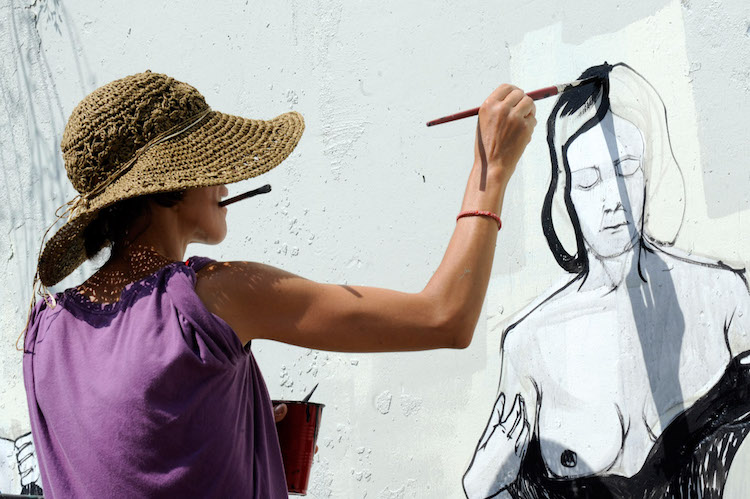
Hyuro at work, Atlanta, 2013. (Photo: Martha Cooper)

‘Sowebo/Soweto' (Photo: Martha Cooper)
The show also features projects like Sowebo/Soweto. How long has that series been in the works and what sparked the origins of the project?
Looking back on my work, I felt that my Street Play photographs were among my strongest, so in 2006 I decided I wanted to shoot another street photography project. After some on-site research, I chose to concentrate on a difficult neighborhood in my hometown of Baltimore where there seemed to be a lot of life on the streets. I even bought a small house to try to become part of the community. In the '80s, the neighborhood had been nicknamed SoWeBo for Southwest Baltimore after one of the residents read an article in the newspaper about Soweto. I continued to live in New York but made over 200 trips by bus to Baltimore.
In 2012, Gaia organized a street art project in Baltimore called Open Walls and invited Ricky Lee Gordon from Cape Town to paint. I was the official photographer. Ricky then organized a project in Johannesburg called i Art Joburg and invited me to come, my first trip ever to South Africa. As part of the project, Ricky brought all the participants to Soweto for a day to paint with local children. I was immediately struck by the similarities to Sowebo and began to shoot some pairs of photos which I printed and exhibited in Johannesburg. I was excited by the idea of continuing the comparison of two supposedly very different places, so I applied for a Soweto artists’ residency that I read about online. This enabled me to live in Soweto for a month. The residency was founded by renowned South African filmmaker Dumisani Phakathi and he lent me whatever support I needed to get the photos I was looking for—a wonderful experience.
Monica was also invited to i Art Joburg and went to Soweto when I did. So she knew about Sowebo/Soweto and asked me to put those photos in the Wish exhibit.
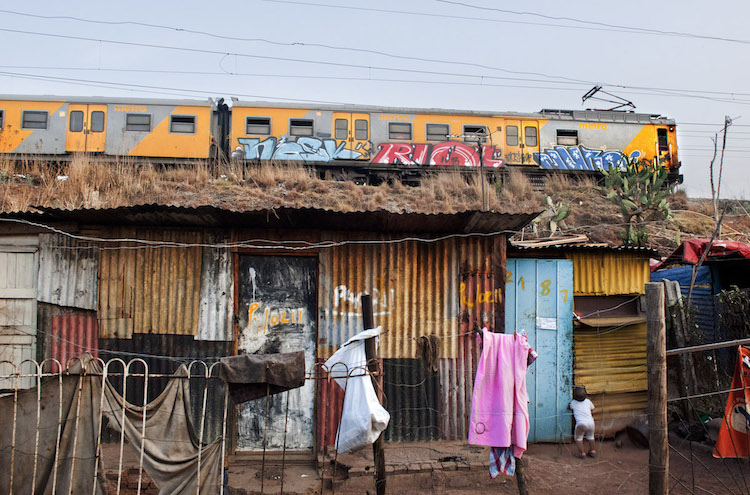
Soweto, 2013. (Photo: Martha Cooper)
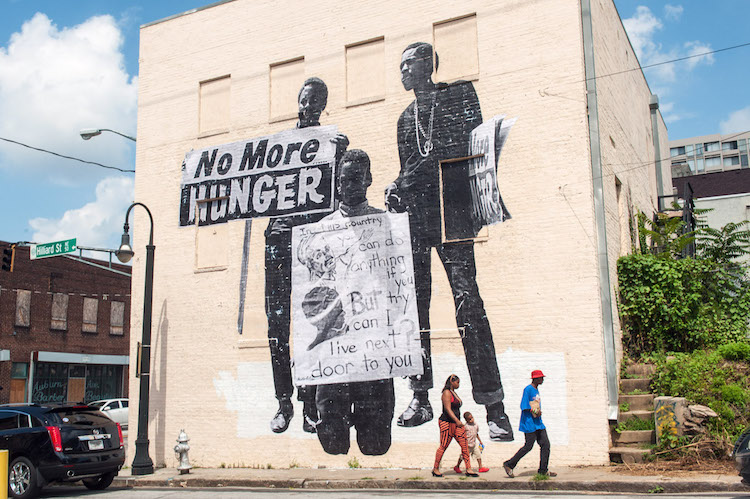
JR in Atlanta, 2013. (Photo: Martha Cooper)
You've been working as a documentary photographer for a long time. What is it about this type of photography that still gets you excited?
I'm excited to photograph things I've never seen before. Rather than trying to make art with unusual angles or shadows, I try to take a photo which clearly shows the subject. For many years I've worked with anthropologists and folklorists documenting their projects which have included such diverse topics as yard shrines, Chinese New Year's lion dancing, Puerto Rican casitas, and Haitian Vodou. Academics who have researched their topics in-depth for years can provide access to places and traditions that would be difficult to shoot on one's own. I like to think that my photos will be archived and available to future generations as historical documents.
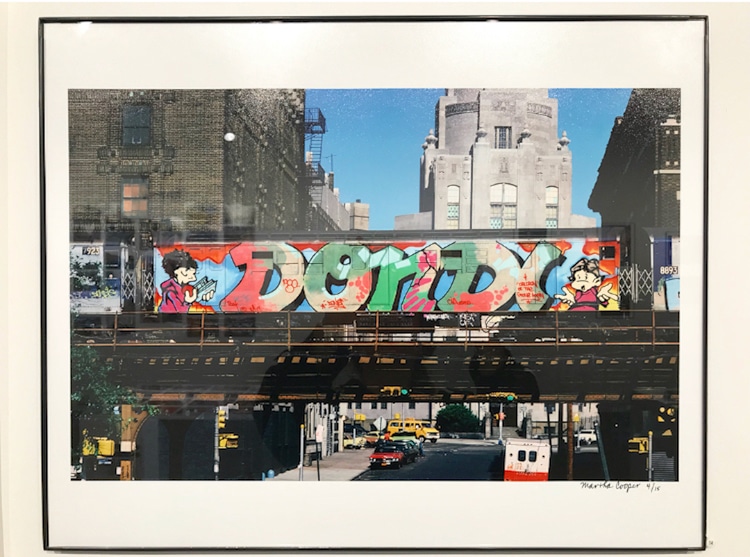
Dondi, New York, 1980.
Is there any particular image in the exhibition that has special meaning for you?
It's no surprise that my all-time favorite photo is the one of Dondi painting a subway standing between two cars. [Editor's note: This iconic image graces the cover of the 25th anniversary edition of Subway Art.] The photo was difficult to get—illegal activity, low light, iso64 Kodachrome. I had been photographing Dondi for over a year before he allowed me to accompany him to the yards. Although Dondi had explained how he was able to paint a whole car in a single night, it wasn't until I was able to document it from start to finish that I really understood the process and the meticulous planning involved to carry out the action. I feel the photo captures the intensity of the activity better than any photo I've taken since.
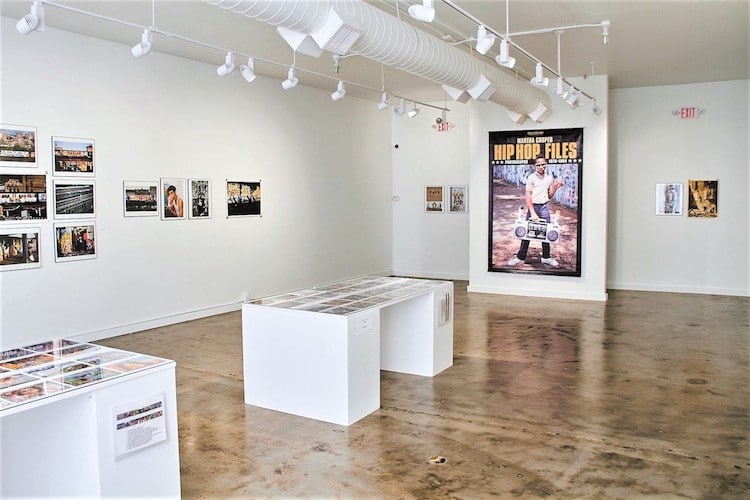
Martha Cooper: Then and Now is on view at The Gallery by Wish in Atlanta, Georgia until March 8, 2018.
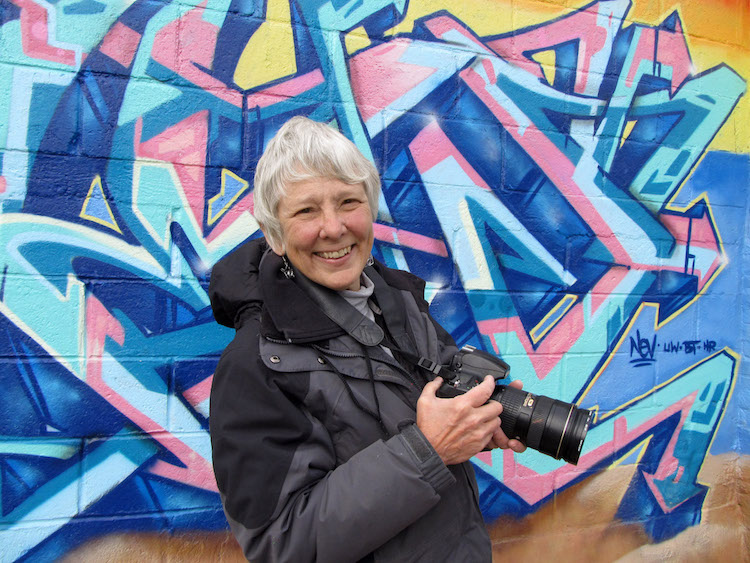
Wish Atlanta: Website | Facebook | Instagram
My Modern Met granted permission to use photos by The Gallery by Wish.
Related Articles:
Top 12 Street Photographers Who Captured the Grit of New York in the 70s and 80s
10 Key Moments in Street Art History That Made Graffiti a Beloved International Art Form












































































